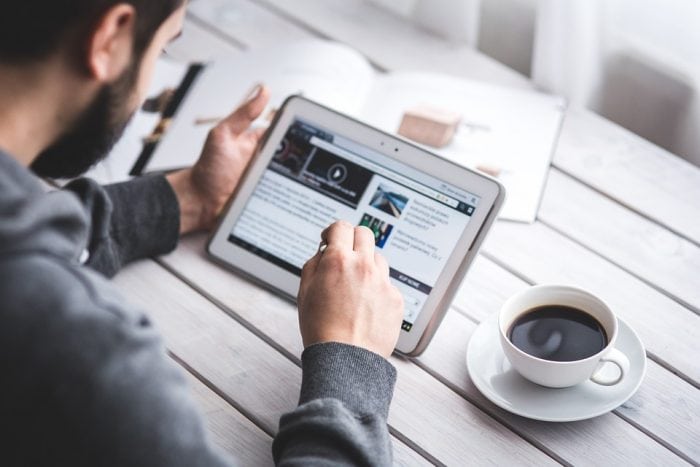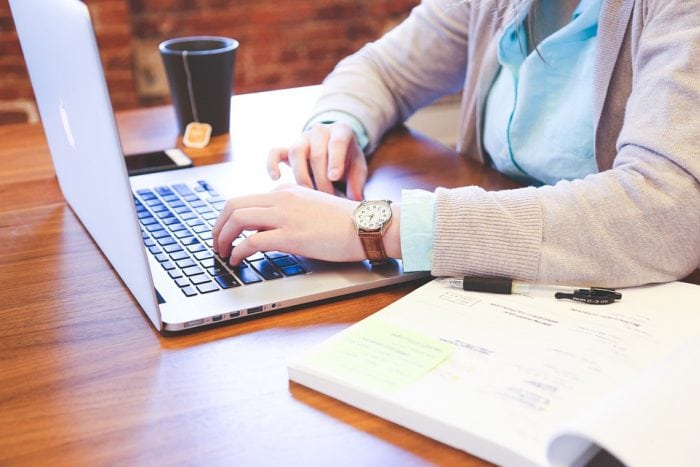
The corporate office is an icon of the modern day workforce, it houses today’s workforce and is the structure around which most business takes place in modern America and the world.
Workplaces are always looking for methods to enhance the productivity of their employees. From large corporate offices to small restaurants and startups, the science behind the psychological forces that impact how we work are of great interest to researchers. Scientists have conducted research into many different topics relating to productivity such as attention span, setting goals, motivation, collaboration, and even physical posture.
Increasing Attention Span
While technological innovations can help us accomplish tasks quicker, the ready access to digital distractions like Facebook, Twitter, and Instagram (assuming you aren’t using these things as part of your job), can frequently harm our productivity by removing our attention from the task we should be focused on. This is particularly true when our digital devices make various cues to alert us to incoming messages or alerts like vibrations and sounds.
Research has shown that multitasking isn’t really possible in the traditional sense, and that when people claim they are multitasking they are actually just flipping back and forth between tasks quite quickly. (However, it is possible to get better at the ability to switch back and forth between tasks, reducing the time it takes to remember where you were at the other task).

Photo: kaboompics via Pixabay, CC0
Psychologists suggest that an effective method of increasing one’s attention span and productivity is to eliminate technological distractions for a while by giving oneself a prescribed “technology break”. Allow yourself a few minutes of checking messages after 15 minutes of uninterrupted work. Once an individual can accomplish this, they can start increasing the amount of work time between technology breaks.
Taking a break like this is often necessary for your concentration and attention span in the long run, as research suggests that people have around 30 minutes of attention for a specific task before it begins to degrade. Focus begins to fall after this point and declines sharply. Taking a few minutes to switch to another task and refresh your brain can help keep your attention sharp. There are individuals differences between people of course, but it would be good to give yourself a 10-minute break or so at most every hour.
Visualizing Goals
Writing down your goals is a common piece of advice for those seeking to boost their productivity, and research suggests it works. Writing out a list of desired outcomes and particular plans to achieve these outcomes actually has a substantial impact on the ability of people to increase their performance, at least according to one study that tracked the academic performance of studies who wrote out their goals along with strategies to achieve those goals.
It’s thought that the act of putting something in writing helps people see the goal as more realistic and makes them accountable to the goal, and it also helps people write out solutions to problems when they encounter them. Keeping logs of strategies that work and strategies that don’t helps people overcome difficulties and develop confidence, and this strategy seems to work even for non-academic or non-workplace goals.
Collaborating With Others
Taking time after a project to debrief employees as a team can help employers improve overall productivity in the long run. Research conducted at the Rotterdam School of Management at Erasmus University suggests that the groups met up regularly to evaluate how their work processes were proceeding were more likely to create innovative problem solutions than groups that didn’t meet up as regularly.
Regular group meetings should facilitate group cohesion and allow members to brainstorm problem solutions and improve their teamwork. The focus should not be on what the group is doing wrong, but what could be changed to facilitate even better performance.
Don’t Sit Around
According to research conducted at the Texas A&M School of Public Health, sitting around all day at work could be bad for your productivity. Workstations that have standing desks or desks that are capable of standing may engender more productivity than regular workstations. A six-month-long study of employees tracked the productivity of workers with traditional desks and desks that were capable of standing. Workers with standing-capable desks stood about 1.5 hours longer during the day on average, but they were also about 42% more productive than workers at seated desks.
When people are standing more blood flows to the brain than when they are sitting down, which helps make the brain more engaged with the task it is handling. The research also implies that it is important to avoid standing in one place all day, however, and that shifting around to take the weight off one side of the body is important. If one doesn’t have access to a standing workstation, they can get similar benefits by taking a short walk on their break.
Getting Started On Projects
The most difficult part of a project is often just getting started. This is because when we contemplate a task ahead of us, we visualize the most difficult parts of the project to come. This creates a tendency to avoid this tough work by engaging in smaller, less important work (distractions). However, there is a phenomenon known as the Zeigarnik effect where the brain tends to remember uncompleted or uninterrupted tasks better than completed tasks. Taking advantage of this effect can be a good way to motivate oneself to finish a project. Therefore, simply forcing yourself to start a task is one of the best ways to enhance your productivity.

Photo: StartupStockPhotos via Pixabay, CC0
This is often easier said than done though, precisely because of the immense psychological barrier towards starting a project. To get around this, some people recommend using the Two Minute Rule. The Two Minute Rule is a productivity tip intended to make accomplishing difficult tasks easier. It has two parts to it:
If the task can be accomplished in the less than two minutes, do it now.
If the task will take you longer than two minutes, do it now for two minutes.
The idea behind this is that two minutes isn’t a long time to commit to a task, and even when you are lacking willpower you can probably convince yourself to commit to two minutes. Yet the mere fact that you started the project makes it much easier to continue and if you start for two minutes there’s a good chance you’ll find yourself motivated to keep working.
Taking Frequent Breaks
As previously mentioned it is important to take breaks while working, far from slacking off breaks can help increase your productivity. “Movement breaks” are important for your health, getting up to stretch and walk will help keep you physically fit and keep your mind sharper and increases your memory by increasing the blood flow to your brain. Breaks can also help keep “decision fatigue” at bay. Decision fatigue is a phenomenon where one’s reasoning ability and willpower drains throughout the day as people have to make more decisions. Breaks also help refill your motivation, making them especially important for long tasks. Replenishing your well of mental energy and resources can not only help you find the motivation to finish a task but also help you come up with creative solutions to the problem. Finally, breaks decrease stress and exhaustion.








